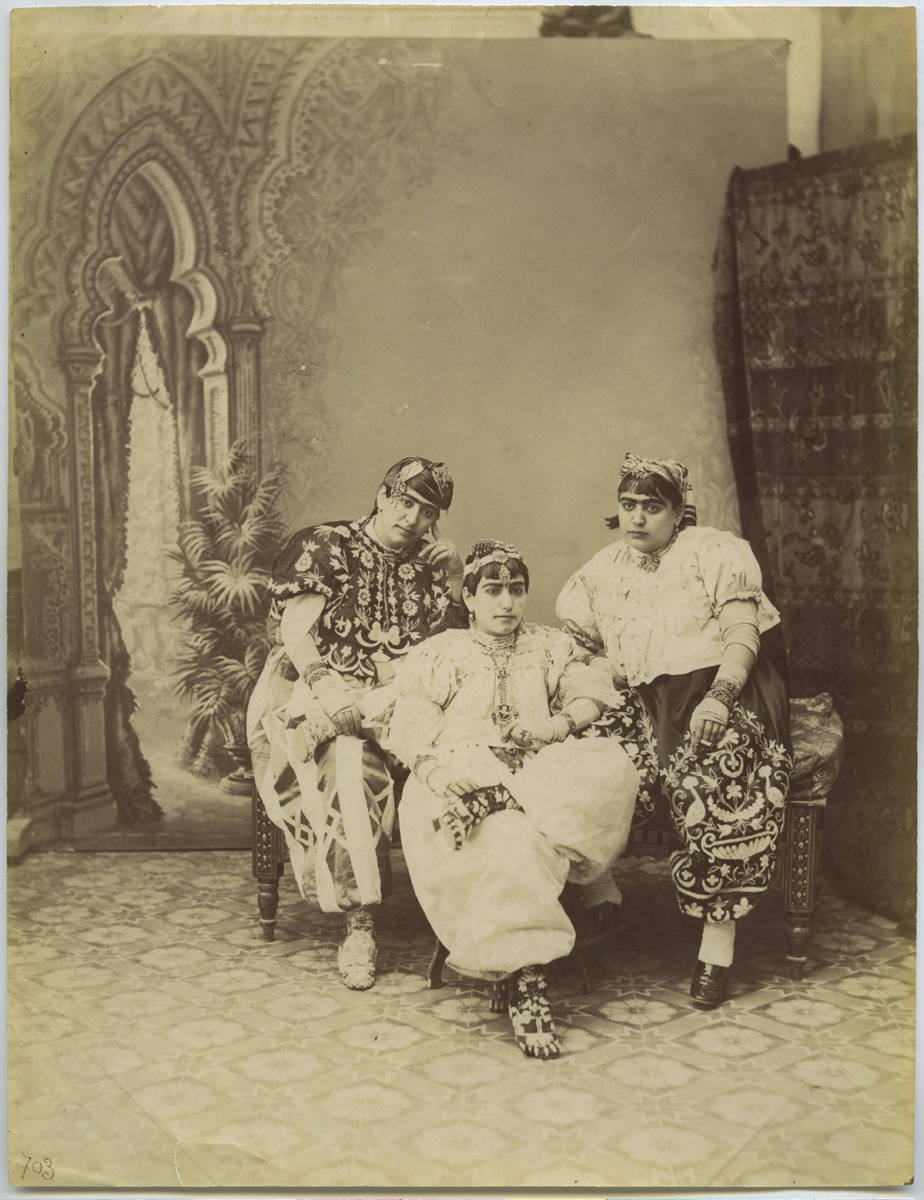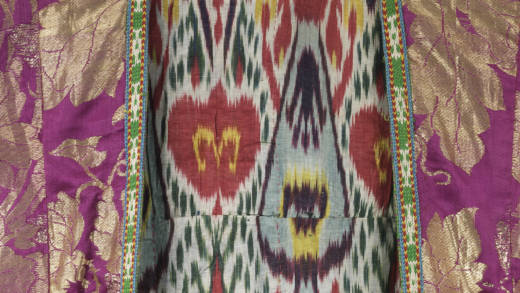The current exhibition at the Contemporary Jewish Museum, Veiled Meanings, makes the compelling argument that historical Jewish dress is world dress.
Drawing from the collection of The Israel Museum in Jerusalem, this traveling exhibition gets new energy in the hands of curator Heidi Rabben, who organizes the textile designs and clothing by geographic region, loosely tracing the route of the Silk Road. Enlarged photographs of people wearing similar items of dress, along with a stop-motion animation of a stylist dressing mannequins in some of the more complex warps and veils, add a refreshing liveliness to the exhibition.

One expects the clothing to be beautiful, but the sheer variety of garments—voluminous 19th-century Tunisian trousers, an Indian wedding sari, an ikat-dyed Uzbek coat—were what caught me by surprise. These visual and tactile manifestations of the Jewish diaspora tell a story of people moving through time and space, of regional styles adopted and maintained, and of clothing passed down through generations as records of lives lived.
Please note: I am not to blame if you leave the museum with a deep desire for your own pair of voluminous trousers.
‘Veiled Meanings: Fashioning Jewish Dress, from the Collection of The Israel Museum, Jerusalem’ is on view at the Contemporary Jewish Museum in San Francisco through Jan. 6, 2019. Details here.


